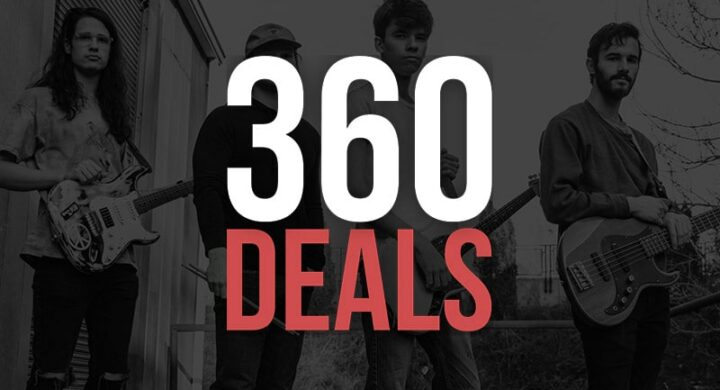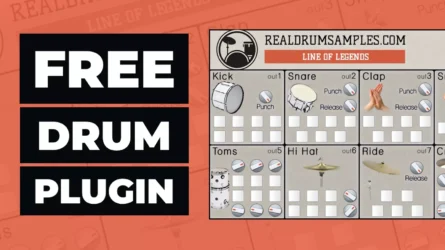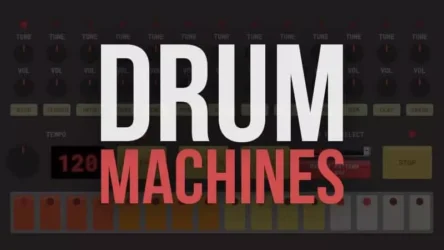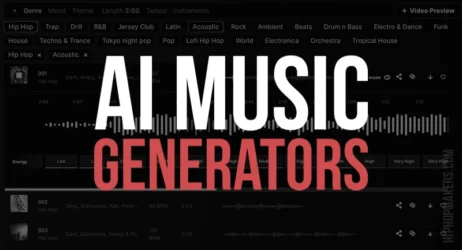This guide will answer what is a 360 deal, the pros & cons, how they work, and if they are good or bad. So what is a 360 deal?
What Is A 360 Deal in Music?
A 360 Deal is a contract that allows record labels to receive a percentage of a music artist or band’s total earnings, such as live performances, acting, merchandise, speaking, and branding. These deals are controversial because these contracts can advance an artist’s career or cause harm.
- What Is A 360 Deal
- How Does a 360 Deal Work
- What Are the Pros Of 360 Deals
- Is a 360 Deal Good or Bad
- What Does a 360 Deal Include
- Can 360 Deals be Negotiated
- Why Is It Called A 360 Deal
- What Artists Have 360 Deals

What Is A 360 Deal?
A 360 deal is an alternative to the traditional recording contract. In this deal, the music company supports an artist in more avenues than those usually covered by a conventional recording contract. During the 21st century, revenues earned from the mass distribution of recorded music lowered dramatically, reinforcing that much of a musician’s income is generated from sources other than recorded music, such as merchandise and live performances.
Record labels have evolved with the digital age of music and changed their business models to stay relevant and profitable.
A 360 Deal is also referred to as a ‘multiple rights deal,’ enabling record labels to earn revenues that would otherwise have been off-limits to them. In a 360 deal, the company is entitled to any revenue the artist earns through:
- Digital Sales
- Merchandise sales
- Ringtone sales
- Placement royalties
- Endorsement deals
- Tours, live performances, and concerts
- Appearances in television shows and movies
- Songwriting, publishing, and lyric display
The record label functions as a pseudo-manager and looks after the interests of the artist or band throughout their career. Through their extensive network of contacts, they explore and develop new opportunities and new income streams for themselves, rather than focusing exclusively on selling music records.
The company provides financial support and helps the artist with marketing, promotion, touring, and other areas.
360 deal contracts can vary across the board and the proportion of the artist’s net income that a record company shares can be different for each artist. Most labels require a share of 10-35 percent of non-recording sources.
Cross-collateralization is also a fundamental feature of conventional recording contracts and 360 deals. In a traditional contract, the label pays the artist an advance for recording an album, and the artist is required to repay the advance from their subsequent income.
If the artist cannot earn enough royalties from one album, royalties earned from another successful album may be used to recoup the advance of previous albums.
In a 360 deal, cross-collateralization can occur from various income sources other than recorded music.
This means that the artist’s income from the sale of merchandise can balance the advance paid by the record company for recording an album. However, this doesn’t mean that all revenue sources will be cross-collateralized, depending on the negotiation in each case.
Related: What Are Masters? What Does It Mean to Own Masters?
How Does a 360 Deal Work?
The record deal is only one part of the 360 deal package, and the main characteristic is that the label receives income from revenue sources besides recordings.
In addition to these, various subsidiary rights could also be incorporated under these broad headings, such as ticketing income. In a 360 deal, the label might ask for a certain percentage of merchandising income and a different percentage of tour income.
There are two types of rights: active and passive. The passive deal entails that the label will request a percentage of the artist’s income from touring, for example, but will not actively manage those rights.
On the other hand, in an active deal, the label insists on having a role in rights management. For example, the company can demand the artist to sign a deal with its in-house merchandising division. Most 360 deals are a mix of both active and passive rights.
The label’s involvement in each stream of income has a direct impact on the percentage they charge. If the label’s participation is active, then its share of the percentage for that income will be higher in contrast with passive participation.
What Are the Pros Of 360 Deals?
We know how record labels benefit from this deal, but is it worthwhile for artists? Let’s look at the pros of a 360 deal:
Develop As An Artist
Artist development deals are a thing of the past, and most big record labels usually sign artists with a solid public image and have their music and branding sorted. However, 360 deals are generally low risk for labels.
For this reason, even if the first album or tour isn’t a success, they continue working with the artist if they see the growth potential. This gives the artist a fair chance at growing professionally. Also, the lessons learned working with a label could help establish a lucrative career as an independent artist.
You Can Save Some of Your Costs
Depending on the contract terms, most of the artist’s costs will be covered by the record label.
That way, the artist can save some of their money by not paying a booking agent or their own merch. If the artist is unable to make enough money with record sales, the company will search and develop new revenue streams.
Connecting with the Best People
If a major label signs an artist, they would have access to experienced producers and engineers and a marketing powerhouse. The artist might not get to choose who they work with, but the people they are set up with definitely know what they’re doing. This relieves the artist from worrying about the details.
Is a 360 Deal Good or Bad?
While there are many advantages for an artist in signing a 360 deal with a major label, there is a downside to it as well. Let’s compare both sides.
The Upside of a 360 Deal
- The artist learns and grows as a professional.
- The artist can concentrate on their creativity and music without having to worry about other details.
- It gives rising artists the rare opportunity to work with leading professionals.
- The artist can save up some money of their own and not become fully invested in their work.
The Downside of a 360 Deal
- The record labels take a percentage share of everything.
- In most deals, the artist loses the copyright of their music.
- The label may acquire active participation rights but later sign off those rights to a third party.
- The label may sign a ‘sweetheart deal’ with another company affiliated with the label, and the artist ends up giving up a higher share of their revenue.
- Sometimes the label’s share of tour income is calculated on the gross tour receipts, which is much higher than the net profits earned from touring.
- The artist has to give up creative control over things like how their music should sound and production methods.
What Does a 360 Deal Include?
Like traditional recording agreements, in a 360 deal, the label can acquire the copyrights of the artist’s music recordings and options for multiple albums. The deal varies depending on how big and popular the artist is and the type of income streams the record company wants to acquire.
Most companies can ask for anywhere between 10 to 25 percent of the artist’s net income from sources other than record sales.
This amount can change depending on the negotiation expertise of the artist’s legal team and the recording team. The label’s share of particular kinds of income can be as low as 10 percent or as high as 50 percent.
The label’s share of tour income is sometimes calculated on the artist’s gross tour receipts rather than net.
Although the percentage share would be in the range of 5% – 15% if it is based on the gross, it is very risky from the artist’s viewpoint.
The deal can include active participation in the artist’s music publishing rights, and this means that the artist is bound to sign a music publisher affiliated with the label.
Can 360 Deals be Negotiated?
360 Deals can aid in establishing a lucrative career for an artist. It is essential to consult a good entertainment lawyer and negotiate the terms of such a deal in detail. The artist can attempt the following negotiations:
- Reduce the percentage of income for each type of non-record income.
- Reduce the types of income covered.
- Exclude preexisting revenue sources.
- Limit the term of participation.
Why Is It Called A 360 Deal?
A 360 deal encompasses all the revenue streams of an artist, and hence, the term ‘360’ is used to define this deal. In contrast, a 180 deal means that the income of the label only shares from record sales and music publishing.
What Music Artists Have Signed A 360 Deal?
Some famous music artists that have signed a 360 deal include Madonna, Jay-Z, Fetty Wap, Young Thug, and Migos.
Summary of 360 Deals
In 360 Deals, record labels receive a percentage of a band’s total earnings, such as live concerts, merchandise sales, and branding. The contracts are controversial since they can help or hurt an artist’s career.
In the music industry, it’s increasingly common for record labels to offer 360 deals to artists and bands.
As a blanket term, a 360 deal refers to record contracts that allow brands to get a percentage of the artists’ income from multiple sources, such as digital sales tours, album sales, and even television appearances.
This could lead to more profits for the business but has significant implications for the artist’s career.
Under a 360 deal, musicians aren’t just making money from music sales; record labels also earn from their public appearances, songwriting, and television shows.
While this might mean the artist has more resources to boost their music career, it also implies that they share their income from various activities.
This is an important consideration in contract negotiations, as an artist might feel their own money is stretched thin by a large tax bill or studio time costs.
On the other hand, a 360 deal can provide a robust support structure, particularly for those just starting their music careers. Record labels offer marketing support, helping the artist or rock band build a substantial fan base.
Furthermore, record labels are less likely to drop artists with these deals since they’re invested in their overall success, not just in album sales or tour profits.
Critics, however, argue that 360 deals can be restrictive, leaving the artist with less control over their career.
They also note the potential for artists to lose out on a substantial portion of their income from music sales, including digital sales on streaming services, performance revenue, and publishing royalties.
A 360 deal can be a double-edged sword in the music industry.
While it provides resources and support to artists in exchange for a percentage of income from different kinds, it can also limit the artist’s control over their career and potential earnings.
As the music business evolves, artists and bands must carefully consider their options before entering into these increasingly common 360 deals.
I hope you now have a better understanding of what a 360 deal is, and how they work.





You are amazing. Very articulate and on-point. I love the dedication you have to educating people on these matters unlike many other sites that only use topics as click-baits. Thank you.